Explore the trekking trails of the Western Ghats of South India, offering rugged mountain vistas and unforgettable adventures.
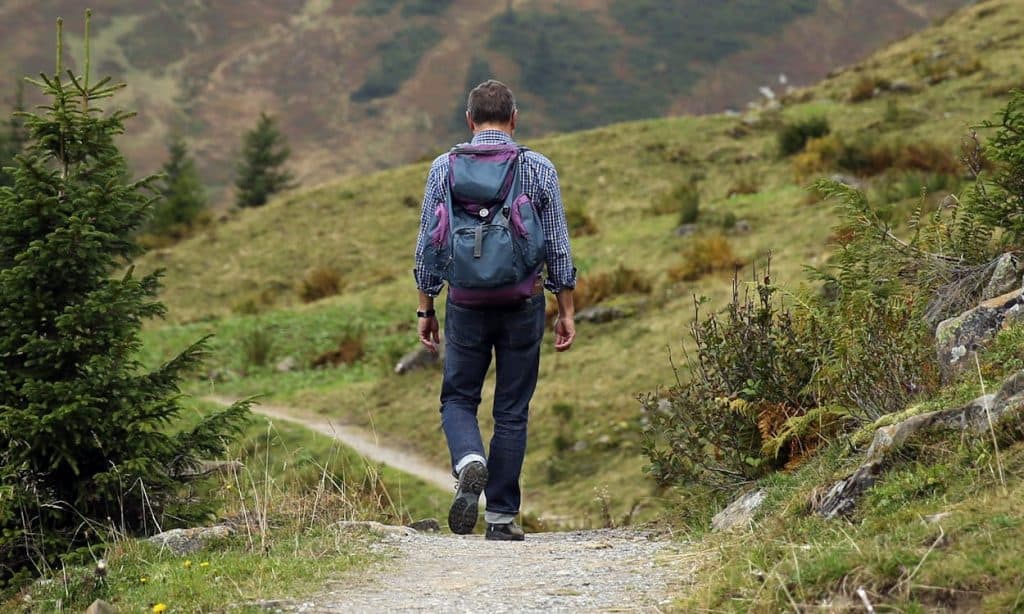
Situated along the southwestern stretch of India, the Western Ghats are not just one of the world’s eight ‘hottest hotspots’ of biological diversity, but also a trekker’s paradise with trails offering everything from misty mornings to panoramic sunsets.
Trekking through the Western Ghats, designated as a UNESCO World Heritage Site offers an extraordinary experience that showcases the ancient and diverse landscapes of this mountain range, which is older and more diverse than the Himalayas.
This mountain range boasts some of India’s most untouched waterfalls, forests, lakes, and valleys. It serves as the source for many major rivers and houses India’s last pristine evergreen tropical forest, the Silent Valley National Park.
The unique north-south alignment of the Western Ghats results in varying temperature zones along its length, creating distinct ecosystems every few kilometres. This rich variety of flora and fauna makes treks in the Western Ghats a premier destination for trekkers seeking unique and biodiverse environments to explore.
For those eager to put on their hiking boots, the Western Ghats offer an array of trails that promise both challenge and charm, all while navigating through some of South India’s most breathtaking landscapes.
Kumara Parvatha Trek, Karnataka
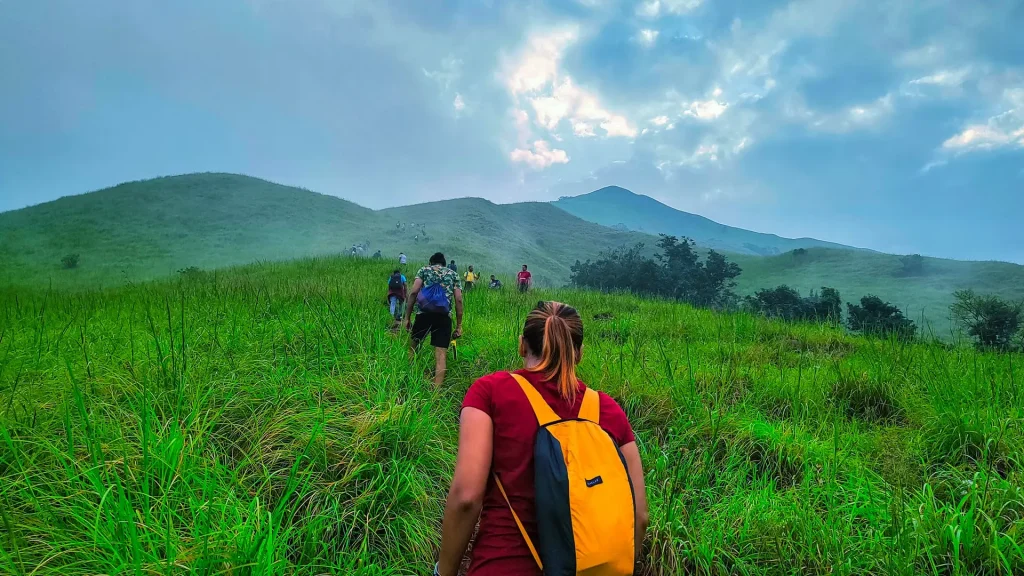
A challenging trek that spans 22 kilometres and typically takes 2 days to complete is the Kumara Parvatha trek in the Western Ghats of Karnataka. Trekkers are drawn to Kumara Parvatha for its diverse terrain, encompassing dense forests, vast grasslands, and even a captivating waterfall, promising a trekking experience like no other.
Kumara Parvatha is home to the revered Kukke Subrahmanya temple at its base. This ancient temple, steeped in history, holds deep significance for locals and draws devotees from across the country, particularly South India, who flock here to offer prayers and make wishes.
Adjacent to the temple stands Shesha Parvatha, cloaked in the verdant foliage of the Pushpagiri Wildlife Sanctuary. Kumara Parvatha, also known as Pushpagiri, remains hidden behind Shesha Parvatha, only revealing itself after crossing the latter. However, the entire trail is commonly known as the Kumara Parvatha trek.
Rising to over 1,700 meters, Kumara Parvatha is Kodagu district’s second-highest peak and Karnataka’s fourth-highest peak. As dawn breaks, the sight of Shesha Parvatha hints at the thrilling adventure ahead, setting hearts racing.
Meesapulimala Trek, Kerala
Get on the enchanting Meesapulimala Peak trek, a journey through lush valleys, blooming Rhododendrons, and charming tea estates. Located at an altitude of 8,661 feet in Kerala’s Idukki district, Meesapulimala offers serene landscapes as you traverse eight hills, straddling the border of Tamil Nadu and Kerala.
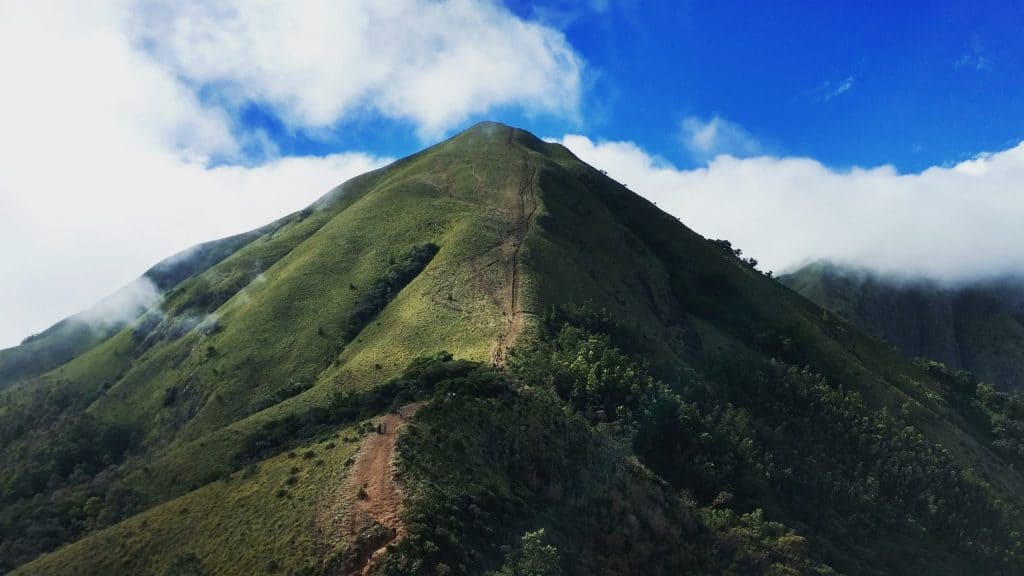
This 8-kilometer trek from Rhodovalley guides you through high-altitude grasslands, dense rainforests, and diverse wildlife habitats. Despite its name suggesting a tiger’s face, don’t expect any tiger sightings here; “Meesa” means moustache, “puli” means tiger, and “mala” signifies hill, hence the unique name.
Ideal for trekkers of all ages, this day trek promises scenic vistas and memorable photo opportunities along the way. With an easy to moderate difficulty level, it’s a trek achievable without major challenges.
Starting from a Jeep track at the hill’s base, the trail veers left after about 10 minutes, gradually ascending towards the first hill’s peak in about 30 minutes. Keep an eye out for the rare Neelakurinji flowers blooming once every 12 years. From the hilltop, marvel at panoramic views of Meesapulimala, Munnar, and Suryanelli town.
Tadiandamol Trek, Coorg, Karnataka
Standing at approximately 1746 meters above sea level, Tadiandamol claims the title of the highest peak in Coorg district, Karnataka, and ranks as the second highest in the entire state. Situated around 8 kilometres from Kakkabe town and roughly 35 kilometres from Madikeri, Tadiandamol lies in the southeastern part of Coorg.
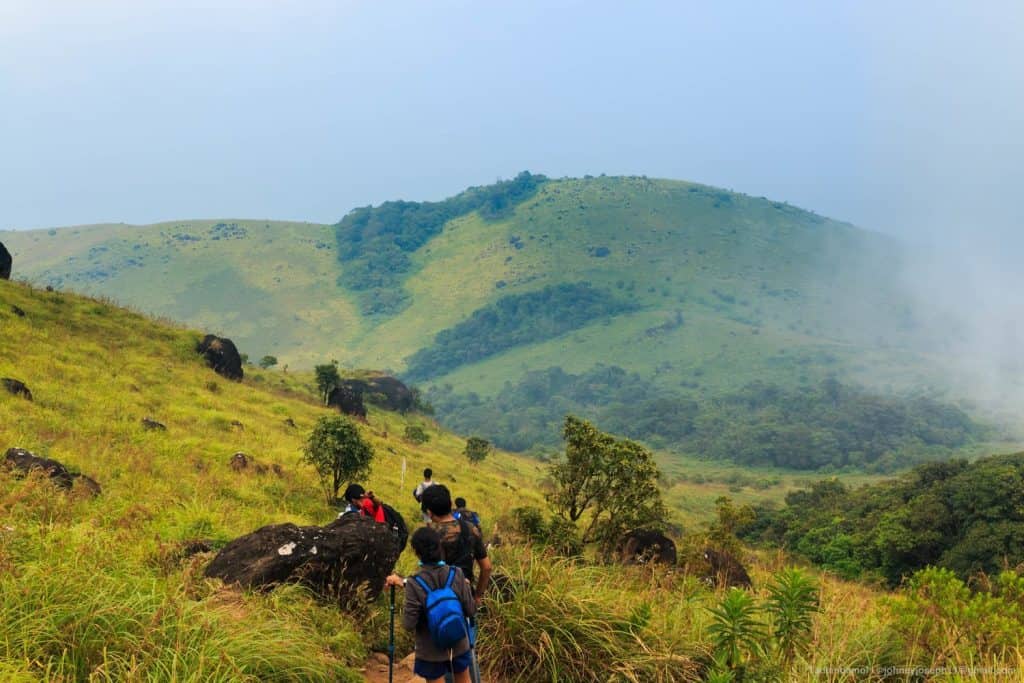
For trekking enthusiasts, Tadiandamol offers an exhilarating adventure and ranks among the best hikes in India. Upon reaching the peak, visitors are treated to awe-inspiring views of the surrounding landscape amidst a serene and refreshing ambience. The peak is best explored between December and May, with early winter being the preferred time for trekking. It’s located around 30 kilometres from Virajpet.
To reach Tadiandamol, travellers can opt for a private vehicle, covering about one-third of the distance by jeep or car. However, reaching the summit requires a considerable amount of trekking, which can be strenuous but ultimately rewarding once you reach the pinnacle.
During the trek, trekkers can find accommodation at the Nalknad Palace, a historic two-storied structure built by Dodda Veerarajendra in 1792, serving as a convenient base camp for the night. In the morning, trekkers can resume their journey by ascending the steep path from the palace, eventually leading to the peak.
Additionally, from Tadiandamol, visitors can explore the nearby Padi Igguthappa temple, an important religious site for the Kodava community, located just a few kilometres away.
Agasthyakoodam Trek, Kerala
Trekking to Agasthyakoodam in Thiruvananthapuram promises an extraordinary wildlife experience, making it a must-try adventure for your bucket list. Legend has it that Sage Agastya, one of the Seven Sages in Hindu mythology, meditated in this place, giving rise to the name Agasthyakoodam.
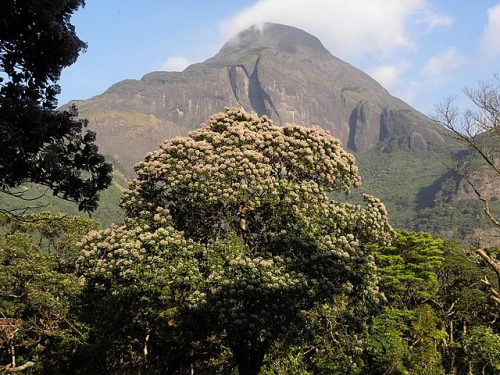
As one of the highest peaks in Kerala, Agasthyakoodam boasts rich biodiversity and captivates trekking enthusiasts with its adrenaline-pumping trails. Located within the Neyyar Wildlife Sanctuary, this scenic peak holds a prominent spot on Kerala’s tourism map.
Set within the grandeur of the Western Ghats, the trekking path leads through varied terrain, spanning lush forests, open grasslands, and rugged rocks. As you journey, you’ll discover enchanting waterfalls, bubbling springs, and towering trees, enveloping you in a mystical forest setting that tests the mettle of even experienced trekkers.
The forest is a treasure trove of rare medicinal plants, believed to infuse the air with healing properties. It’s also home to diverse wildlife, including elephants, bison, leopards, tigers, bears, deer, and Malabar squirrels.
The trek begins from the Bonacaud Forest Picket Station, covering a distance of approximately 50 kilometres over three days. Due to its protected status under the Kerala Forest Department, entry is restricted. The trek typically starts during the Makaravilakku festival at the Sabarimala temple in mid-January and concludes on Sivarathri, usually after mid-February.
Over the three-day journey, trekkers progress from Bonacaud to the Athirumala Base Camp on the first day, ascend to the Agasthyakoodam Peak and return to the base camp on the second day, and finally return to Bonacaud on the third day. Food and accommodation are provided by the Forest Department, ensuring a comfortable and memorable trekking experience.
Dudhsagar Trek, Goa
The Dudhsagar Trek, Goa is popular and centred around the Dudhsagar Falls. The falls cascade through Bhagwan Mahaveer Sanctuary and Mollem National Park in the Western Ghats, marking a dramatic point in the Mandovi River’s journey from the mountains to the Arabian Sea at Panjim. This area, rich in biodiversity, is cloaked in deciduous forests, offering a lush backdrop to the river’s scenic passage.
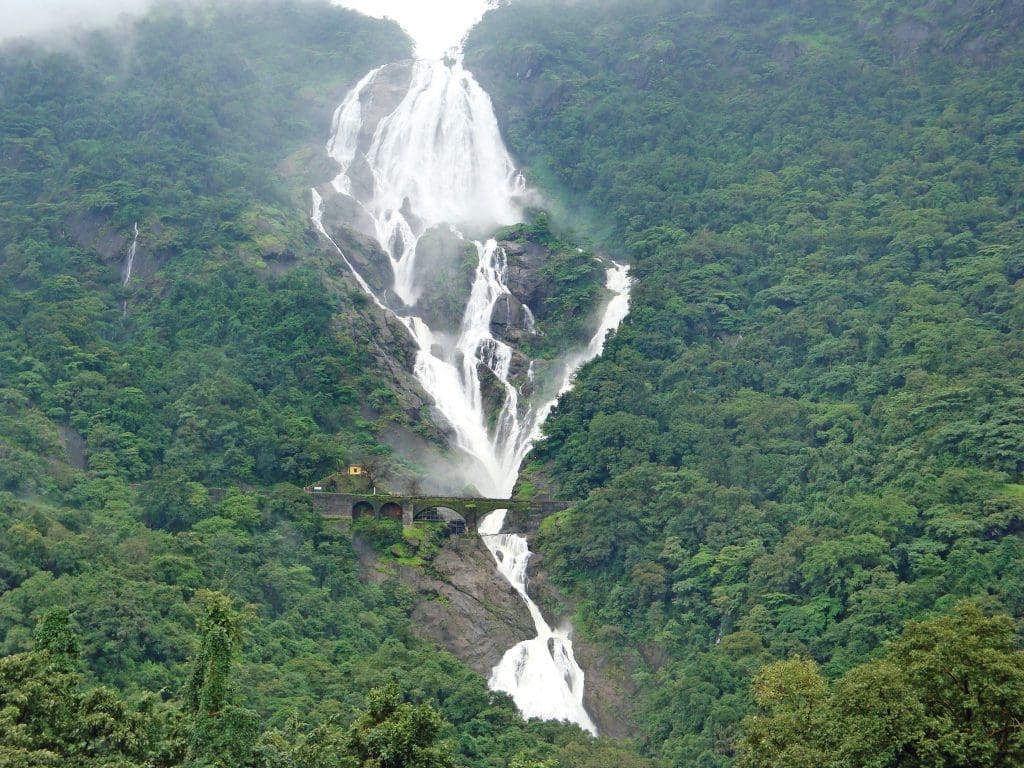
Dudhsagar waterfall is one of India’s tallest waterfalls. It’s a haven for nature enthusiasts seeking solace in the lush forest jungle, fulfilling their cravings for trekking and natural wonders. The name “Dudhsagar” translates to “sea of milk,” aptly describing the waterfall’s appearance as water cascades down the mountain in a voluminous flow resembling milk.
With the arrival of the monsoon, a beloved season for trekkers, nature adorns itself in vibrant greens and vivid colours, offering clear and refreshing views. Trekkers eager to explore new destinations will find this article particularly appealing.
The ideal way to experience the Dudhsagar Falls trek is on foot, a journey that spans about 5 to 6 hours—a manageable feat with the right preparation and guidance. There are two starting points for the trek: Kulem railway station, ideal for those travelling from Mumbai or Pune, and Castlerock railway station, more convenient for those coming from Bangalore.
To reach Kulem railway station from Mumbai, there is no direct train route. Travellers must first reach Madgaon railway station in Goa and then take a passenger train to Kulem. However, it’s worth noting that the frequency of trains from Madgaon to Kulem is limited.
Travel Tips and Preparation:
Season: The best time to trek in the Western Ghats is post-monsoon, from September to February, when the weather is cooler and the landscape is lush.
Gear: Equip yourself with good trekking shoes, a waterproof backpack, and layers of clothing to handle the weather changes.
Permits: Some of the treks require permits, especially those within wildlife sanctuaries or reserved forests. It’s important to check and arrange these beforehand.
Local Guides: Hiring a local guide not only enhances the trekking experience with insights into the local flora and fauna but also ensures safety.
Beyond the Trek
Coorg: Explore the local cuisine and coffee plantations in Coorg. Also one can visit the Iruppu and Abbey Falls, which are in proximity to Tadiandamol. These stunning waterfalls are located in dense forests and provide a perfect spot for relaxation and photography.
Agasthyakoodam: Visit the historical sites and spice markets in Kerala. Agasthyakoodam is a hotspot for birdwatchers, boasting a rich avian diversity including rare species like the Kerala laughing thrush. The region is known for its rich biodiversity, particularly its medicinal plants. Guided tours can help you learn about the local flora and their uses in traditional medicine. Explore the local tribal culture by visiting villages near the trekking path. This can be an enlightening experience as you learn about their traditions and lifestyle.
Dudhsagar Falls: Just about an hour’s drive from the Dudhsagar Falls is Old Goa, a city steeped in history, known for its historical churches and cathedrals like the Basilica of Bom Jesus. Meanwhile, the area surrounding Dudhsagar Falls itself is part of the Bhagwan Mahaveer Sanctuary and Mollem National Park, offering visitors the opportunity to observe a diverse array of wildlife, including birds, monkeys, and perhaps even leopards. For those who prefer not to trek, the majestic Dudhsagar Waterfall, one of India’s tallest and a four-tiered marvel is readily accessible via jeep safari from nearby points.
These activities ensure that visitors can enjoy both cultural richness and natural beauty nearby. Trekking in the Western Ghats is not just a great trekking experience but also a rejuvenating experience for the mind.
Each step on these trails offers not just natural beauty, but also a closer look at the diverse ecosystems and cultures of South India. Whether you’re a solo adventurer or travelling with companions, the trails of the Western Ghats are sure to leave you with memories that last a lifetime.
Read more: Latest



